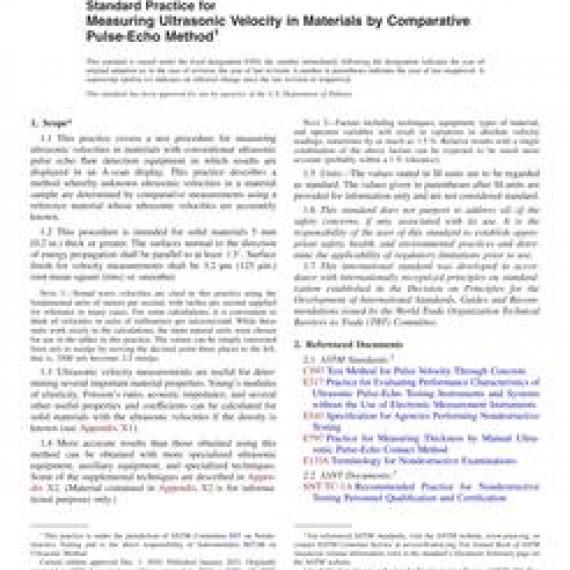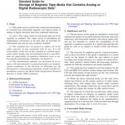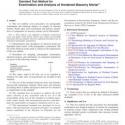No products
ASTM E494-20
ASTM E494-20 Standard Practice for Measuring Ultrasonic Velocity in Materials by Comparative Pulse-Echo Method
standard by ASTM International, 12/01/2020
Full Description
1.1''This practice covers a test procedure for measuring ultrasonic velocities in materials with conventional ultrasonic pulse echo flaw detection equipment in which results are displayed in an A-scan display. This practice describes a method whereby unknown ultrasonic velocities in a material sample are determined by comparative measurements using a reference material whose ultrasonic velocities are accurately known.
1.2''This procedure is intended for solid materials 5 mm (0.2'''in.) thick or greater. The surfaces normal to the direction of energy propagation shall be parallel to at least ''3''. Surface finish for velocity measurements shall be 3.2 ''m (125 ''in.) root-mean-square (rms) or smoother.
Note 1:''Sound wave velocities are cited in this practice using the fundamental units of meters per second, with inches per second supplied for reference in many cases. For some calculations, it is convenient to think of velocities in units of millimeters per microsecond. While these units work nicely in the calculations, the more natural units were chosen for use in the tables in this practice. The values can be simply converted from m/s to mm/''s by moving the decimal point three places to the left, that is, 3500 m/s becomes 3.5 mm/''s.
1.3''Ultrasonic velocity measurements are useful for determining several important material properties. Young's modulus of elasticity, Poisson's ratio, acoustic impedance, and several other useful properties and coefficients can be calculated for solid materials with the ultrasonic velocities if the density is known (see Appendix X1).
1.4''More accurate results than those obtained using this method can be obtained with more specialized ultrasonic equipment, auxiliary equipment, and specialized techniques. Some of the supplemental techniques are described in Appendix X2. (Material contained in Appendix X2 is for informational purposes only.)
Note 2:''Factors including techniques, equipment, types of material, and operator variables will result in variations in absolute velocity readings, sometimes by as much as ''5'''%. Relative results with a single combination of the above factors can be expected to be much more accurate (probably within a 1'''% tolerance).
1.5''Units'''The values stated in SI units are to be regarded as standard. The values given in parentheses after SI units are provided for information only and are not considered standard.
1.6''This standard does not purport to address all of the safety concerns, if any, associated with its use. It is the responsibility of the user of this standard to establish appropriate safety, health, and environmental practices and determine the applicability of regulatory limitations prior to use.
1.7''This international standard was developed in accordance with internationally recognized principles on standardization established in the Decision on Principles for the Development of International Standards, Guides and Recommendations issued by the World Trade Organization Technical Barriers to Trade (TBT) Committee.


































